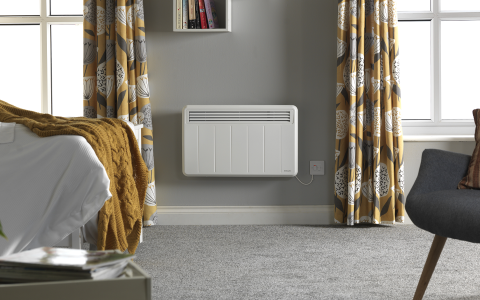Building Regulations in England & Parts L, F and O
With the transitional period now over, the updated 2022 Building Regulations Part L, Part F, and the new Part O, became legally enforceable for all new residential projects.
This is the biggest regulatory change the construction sector has seen in the last 40 years and a stepping stone in our transition away from fossil fuel systems toward decarbonised homes and the electrification of heat - and ultimately, the Future Homes Standard. This shift will impact the way we design buildings and specify technologies.
Have you decided which technologies to specify to achieve compliance for your next residential project?
The new English Building Regulations came into law on the 15th of June 2021. For projects with existing planning permission there is one year transitional arrangements period that applies on plot-by plot basis.
The updated Part L outlines the four compliance metrics for new developments: primary energy target, carbon emissions target, fabric energy efficiency target, and minimum standards for building fabric and building services.
The ventilation system choice under the updated Part F is linked to aritightness as we look to increase indoor air quality. New Part O offers modelling to help mitigate the risk of overheating in buildings.
We designed a simple guide to the changes to Part L and Part F, and the new Part O, and discuss what they may mean for your project.
Our range of HVAC solutions aim to provide future proof technologies to building projects over various sectors.
Request our presentation on Building Regulation changes that answer the most frequently asked questions.
Latest News
Our news section cover building regulations, what the changes to Part L, F, and the new Part of O entail, and what this means for HVAC specification.

Electric heating is officially cleaner than gas central heating
The continued investment in renewable energy and reduced reliance on coal-fired power stations means Britain’s electric heating is now officially cleaner than gas central heating, Government figures show.

Dimplex Oil Free Eco EvoRad Proves Boss Of The Boardroom
An award-winning PR agency with national clients across consumer and trade sectors, Whistle PR is located in the heart of the prestigious Fort Dunlop building in Birmingham.

Creating A Warmer Welcome For Veterans
Acting as a stable social hub to learn new skills, receive support and advice, Veterans’ Garage is a unique project providing support to military veterans across the North West. Bringing ex-servicemen and the local community together, Veterans’ Garage has been conceived as both a PTSD support centre and a venue for fundraising and awareness for both veterans and local causes.











